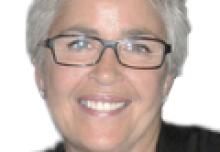COLUMBUS, OHIO—Although investigators have studied stroke in adults for years, research into pediatric stroke is in its early stages, according to an overview presented at the 43rd Annual Meeting of the Child Neurology Society. Neurologists are still attempting to understand the condition and develop treatments and strategies to prevent it and limit its resulting damage.
To gain knowledge of pediatric stroke, neurologists need to collaborate with specialists such as hematologists and cardiologists, said Gabrielle A. deVeber, MD, MHSc, Director of the Children’s Stroke Program at the Hospital for Sick Children in Toronto. Researchers must perform clinical trials to test potential therapies and “increase our understanding of stroke mechanisms through advanced neuroimaging,” she added.
Gaps in Data and Varying Recommendations
Although pediatric neurologists are not entirely comfortable with administering antithrombotic agents to their patients, these drugs are essential to the prevention and treatment of childhood stroke, said Dr. deVeber. The literature includes many randomized controlled trials of antithrombotic agents in adults, but none in children. Similarly, data have established the safety of anticoagulants in pediatric stroke, but there is a dearth of evidence on the agents’ efficacy in children.
Since 2004, four consensus guidelines have emerged for the treatment of pediatric stroke. The guidelines, however, are based on low levels of evidence, and their recommendations vary from group to group.
Clinical practice, too, has changed over time. In the 1990s, approximately 40% of Canadian children with stroke received antithrombotic agents. Today this rate has risen to about 70%, said Dr. deVeber. Anticoagulation use has more than doubled over time, and antiplatelet use has increased as well. Nevertheless, current clinical practice varies widely because of the relative lack of data, which “underlines the necessity for clinical trials,” said Dr. deVeber.
Improving Treatment and Recovery
Neurologists have no foolproof option for neuroprotective care. Because recanalization is not safe for the majority of children with stroke, attentive bedside care is crucial. Neurologists’ goals should be to maintain the child’s energy supply, increase blood pressure, maintain a normal blood glucose level, promote oxygenation, and decrease energy demand, said Dr. deVeber. Fever and seizures are common at the onset of pediatric stroke, and “it’s important that we bring down the fever and treat seizures aggressively,” she added. Seizures greatly increase the metabolic demand on ischemic neurons, thus raising the risk that they will die.
Treatment during the first hours after stroke onset may reduce the size of the infarct, but at least 50% of children with stroke develop a severe injury. For example, children and newborns with acute Wallerian degeneration in the descending corticospinal tract during the first days after stroke have a high likelihood of developing hemiparesis as they mature. This biomarker can indicate that neurologists should intervene quickly, said Dr. deVeber.
One way to maximize motor recovery is constraint-induced therapy, which various studies have proven effective. Another technique, repetitive transcranial magnetic stimulation, had an immediate and statistically significant benefit in a randomized controlled trial and increased strength in patients’ weak side.
Recent Data Describe Stroke Outcomes
Dr. deVeber and colleagues have performed several studies to understand factors that influence the outcome of pediatric stroke. When the group examined 256 children with stroke using the Pediatric Stroke Outcome Measure, they observed that the rate of normal outcome increased with age at stroke onset, and that newborns had the lowest rate of normal outcome.
In an investigation of the potential interaction between age and lesion location, Dr. deVeber found that a small lesion in the frontal lobe was associated with a greater likelihood of good outcome, but a small lesion in the internal capsule was associated with poor outcome. In another study of the effects of lesion location, the researchers concluded that regions of the brain are vulnerable at different ages. Newborns, for example, fare worse with a subcortical lesion than with a cortical lesion, but young children fare worse with a cortical lesion than with a subcortical lesion, said Dr. deVeber.
In a study of infants with perinatal stroke, the children appeared normal as toddlers and preschoolers, but cognitive deficits emerged when the children reached school age. The researchers found emerging sensorimotor, language, and cognitive deficits in approximately 50% of one-month- to two-year-old children with stroke. “But what was surprising and also troubling is that in the two- to 18-year-olds, we also found emerging sensorimotor deficits, language deficits, and, in particular, cognitive behavioral challenges,” said Dr. deVeber.
Other data indicate that pediatric stroke has adverse effects on psychiatric health. Younger age at stroke onset, for example, is associated with a greater number of psychiatric diagnoses, the most common of which are depression and anxiety. “Long-term follow-up is needed to know whether we’re going to make a difference with our treatments,” said Dr. deVeber.


